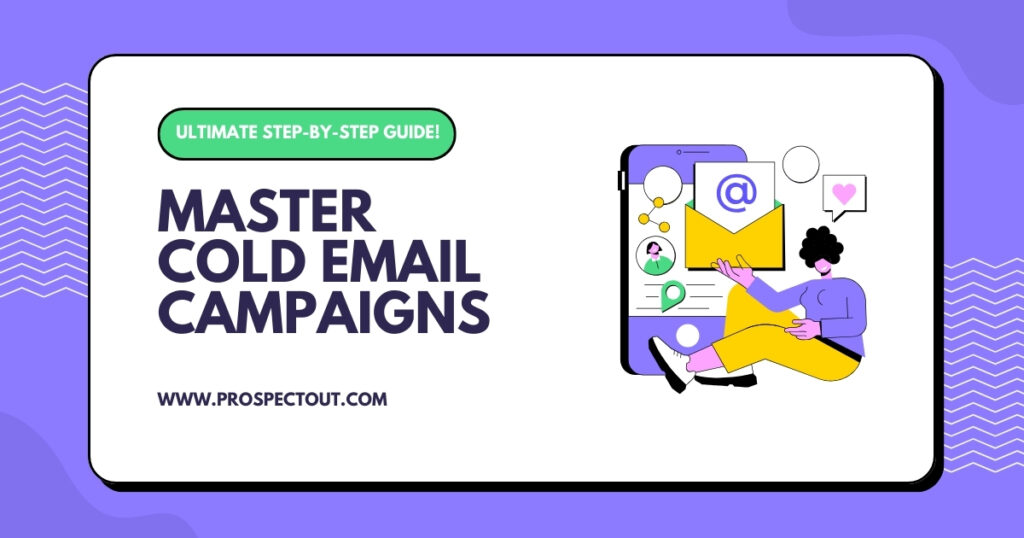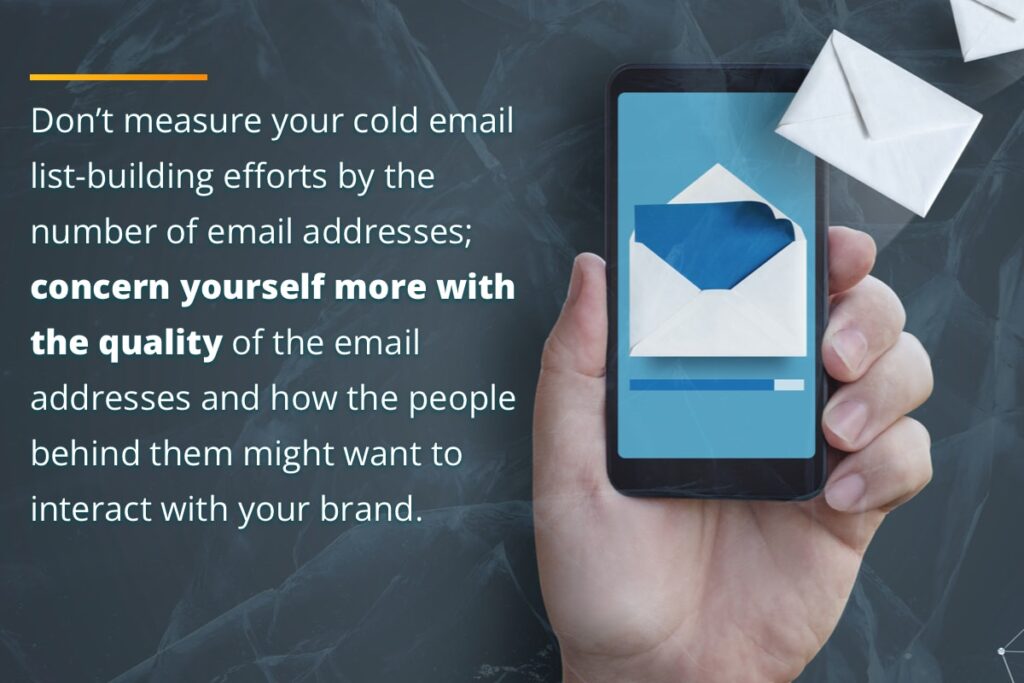If you want to improve your response rates, mastering cold email engagement tips is essential. Here’s how to make your emails stand out and drive results.
Personalize your cold emails and keep them concise. Use a compelling subject line to grab attention immediately.
Cold emails can be a powerful tool for reaching new clients or partners. Personalization is key. Tailor each email to the recipient’s interests and needs. A strong subject line can increase open rates. Make the body of the email concise and engaging.
Address pain points and offer solutions. Including a clear call-to-action encourages the recipient to respond. Avoid using generic templates that can be easily dismissed. Follow-up emails can also boost engagement. Keep these tips in mind to improve your cold email strategy and achieve better results.
Table of Contents

Credit: www.postal.com
Crafting The Perfect Subject Line
Cold emailing can be a powerful tool for reaching new clients or customers. The subject line is the first thing your recipient sees. It can make or break your email’s success. A well-crafted subject line grabs attention and encourages the recipient to open the email. Here’s how to craft the perfect subject line for your cold emails.
Keep It Short And Sweet
Short subject lines are more likely to be read. Aim for fewer than 50 characters. Many people read emails on their phones. Long subject lines get cut off. Keep your message clear and concise.
- Use simple words.
- Avoid jargon.
- Get to the point quickly.
Consider these examples:
| Good Subject Line | Bad Subject Line |
|---|---|
| Need Help with Your Project? | We are offering our services to help you with your project. |
| Boost Your Sales Now! | Learn how our services can help you increase your sales figures. |
Use Curiosity And Interest
Curiosity can be a powerful motivator. Make your reader want to learn more. Use questions, teasers, or intriguing statements.
- Ask a question that piques interest.
- Use numbers or statistics.
- Offer a benefit or solution.
Examples include:
- Can We Improve Your Marketing?
- Discover the Secret to Higher Conversions
- 10 Tips to Save Time and Money
By crafting the perfect subject line, you increase your chances of engagement. Keep it short and sweet. Use curiosity to draw them in. Your cold emails will be more effective.
Personalizing Your Email
Personalizing your email is key to increasing engagement. A well-crafted, personalized email shows you care. It helps build trust with your recipient.
Research Your Recipient
Before sending an email, do some research. Find out who your recipient is. Look at their LinkedIn profile. Understand their role and interests. This information helps you write a relevant email.
Here are some steps to follow:
- Visit their LinkedIn profile.
- Check their company website.
- Read their recent posts or articles.
- Note any mutual connections.
Use Their Name And Company
Start your email with their name. This makes the email feel personal. For example, “Hi John,” is better than “Hi there,”.
Incorporate their company name into your email. Mention something specific about their company. This shows you’ve done your homework.
Here’s a sample format:
Hi [Recipient's Name],
I noticed that [Company Name] recently achieved [specific accomplishment]. Congratulations!
Best regards,
[Your Name]
Using their name and company builds a connection. It makes your email stand out. For more tips, check out our post on cold email marketing trends.
Creating A Compelling Opening
Creating a compelling opening for your cold emails is crucial. It’s the first impression you make. A good opening can capture attention. This increases the chances of your email being read. Let’s explore some tips to make your opening engaging and effective.
Start With A Hook
Start your email with a hook. This grabs attention right away. A hook can be a surprising fact or a thought-provoking question.
- Use a surprising statistic relevant to your audience.
- Ask a question that makes them think.
- Share a short story or anecdote.
For example:
Did you know that 60% of businesses struggle with customer retention?This kind of hook engages the reader instantly.
Relate To Their Pain Points
Identify and relate to their pain points. This shows you understand their needs. Mention a common problem they face. Offer a hint at the solution you provide.
- Identify the key challenges your audience faces.
- Relate those challenges to your services or products.
- Empathize with their situation.
For example:
We understand the struggle of managing multiple social media accounts daily.Highlighting pain points makes your email more relevant. It increases the likelihood of a response.
For more insights, check out our cold email response rate guide.
Keeping Your Message Clear
Cold emails need to be clear to grab attention. A clear message can lead to higher engagement. This section will cover tips for keeping your cold email message clear.
Stay Concise
People are busy. They won’t read long emails. Keep your email short. Use simple words. Aim for two to three short paragraphs. Each paragraph should have one main idea. Use bullet points if you need to list items.
- Short paragraphs
- Simple words
- Bullet points for lists
Here’s an example of a concise message:
| Before | After |
|---|---|
| Hello, I am writing to inform you about our new product that we believe can help your company save money and improve efficiency in the long run. Our product has many features that you will find useful. | Hi, Check out our new product. It can save you money and time. Let’s discuss. |
Avoid Jargon
Avoid technical terms and jargon. Your reader may not understand them. Use plain language. This makes your message easy to read. Focus on benefits, not features. Explain how your offer can help the reader.
For example:
- Instead of “synergy,” say “working together.”
- Instead of “leverage,” say “use.”
- Instead of “value proposition,” say “benefit.”
Simple language keeps your message clear. It helps the reader understand quickly. This can lead to better engagement with your cold email.
For a comprehensive guide, visit our post on the most common cold email mistakes.
Highlighting Benefits
Cold emails can seem daunting. But highlighting benefits can boost engagement. Focus on what the recipient gains. This approach makes your email more appealing.
Focus On Value
Always focus on the value your offer brings. Recipients need to know what’s in it for them. Break down the benefits into clear, bite-sized points.
- Save time with our easy-to-use tool.
- Increase your sales by 25% with our strategy.
- Reduce costs with our efficient solution.
Each point should be easy to grasp. Make the benefits tangible and immediate.
Showcase Unique Selling Points
Highlight your unique selling points (USPs). What makes your product or service stand out? Use a table for clarity.
| Feature | Benefit |
|---|---|
| 24/7 Support | Get help any time you need. |
| Customizable Options | Tailor solutions to your needs. |
| Money-Back Guarantee | Risk-free investment. |
Make sure the USPs are relevant to the recipient’s needs. For more strategies, refer to our cold email strategy page.
Including A Strong Call To Action
Crafting an effective cold email requires a strong call to action (CTA). The CTA guides the recipient on the next steps. It drives engagement and responses. A clear, powerful CTA can make your email successful.
Be Direct
Directness is crucial in a cold email. Avoid vague language. State your request clearly. A direct CTA leaves no room for confusion. For example, use “Schedule a call now” instead of “Let’s discuss.” This clarity ensures the recipient knows exactly what to do.
Provide Clear Instructions
Provide clear instructions to guide the recipient. Break down the steps if needed. For example:
- Step 1: Click the link provided.
- Step 2: Choose a convenient time.
- Step 3: Confirm your appointment.
Such instructions remove any guesswork. It makes it easier for the recipient to respond positively.
Using a table can also help:
| Action | Instructions |
|---|---|
| Schedule a Meeting | Click the calendar link and select a time |
| Sign Up | Fill out the form with your details |
| Download | Click the download button and save the file |
A strong CTA is key to cold email engagement. Be direct and provide clear instructions. This approach will improve your response rates.
For more insights, see our guide on how to use spintax in cold emails.
Following Up Strategically
Engaging with cold email recipients requires a strategic follow-up approach. Following up strategically can significantly enhance response rates and foster meaningful connections. Here, we delve into two critical aspects: Timing Your Follow-ups and Crafting Follow-up Messages.
Timing Your Follow-ups
Timing is crucial for effective follow-ups. The right timing can make a big difference.
- Initial Follow-up: Send your first follow-up 3 days after your initial email.
- Second Follow-up: If no response, send another follow-up after 7 days.
- Final Follow-up: Wait 14 days before sending your final follow-up.
Sending follow-ups at these intervals avoids being too pushy. It keeps you on the recipient’s radar.
Crafting Follow-up Messages
Crafting engaging follow-up messages is essential. Your follow-up should be concise and value-driven.
- Personalize: Use the recipient’s name and reference past interactions.
- Value Proposition: Highlight the benefits and value you offer.
- Call to Action: Include a clear call to action. Ask for a meeting or a response.
Here is a sample follow-up email template:
Subject: Quick Follow-up: [Your Service/Offer]
Hi [Recipient’s Name],
I hope this email finds you well. I wanted to follow up on my previous email about [mention your service/offer].
I believe our [service/offer] could bring significant benefits to [recipient’s company]. Would you be available for a quick call to discuss this further?
Thank you for your time, and I look forward to hearing from you.
Best regards,
[Your Name]
Keep your follow-up emails short and to the point. A clear and direct approach works best. For tips on effective follow-ups, check out our post on hiring a cold email agency benefits.
| Follow-up Timing | Action |
|---|---|
| 3 days | First follow-up |
| 7 days | Second follow-up |
| 14 days | Final follow-up |

Credit: glockapps.com
A/b Testing Your Emails
A/B Testing Your Emails is an essential strategy for improving cold email engagement. It allows you to experiment with different elements of your emails to see what resonates best with your audience. This process helps in identifying the most effective techniques to boost open and response rates.
For more strategies on optimizing your cold emails, refer to our AI for cold email success page.
Test Different Subject Lines
Your subject line is the first thing recipients see. It’s crucial to test different subject lines to determine which one captures attention. Consider varying the length, tone, and keywords.
- Use short and catchy subject lines.
- Incorporate actionable language.
- Experiment with personalization.
For example, you could test these two subject lines:
| Subject Line A | Subject Line B |
|---|---|
| Boost Your Sales in 30 Days! | [Name], Ready to Skyrocket Your Sales? |
Analyze Open And Response Rates
After sending your emails, analyze the open and response rates to see which version performs better. Use email marketing tools to track these metrics.
- Check the open rate to gauge interest.
- Review the response rate for engagement.
High open rates indicate a compelling subject line, while high response rates suggest effective email content.
Use the data to refine your future emails. Focus on what works best for your audience.
Frequently Asked Questions
What Is A Cold Email?
A cold email is an unsolicited email sent to a potential client or contact without prior communication.
How To Increase Cold Email Response Rate?
Personalize your emails, use engaging subject lines, and keep the message clear and concise. Follow up if needed.
What Makes A Good Cold Email Subject Line?
A good cold email subject line is short, intriguing, and relevant to the recipient’s interests or needs.
How Often Should You Follow Up On A Cold Email?
Follow up after a week if there’s no response. Limit follow-ups to 2-3 times to avoid being annoying.
Conclusion
Mastering cold email engagement can boost your business success. Implement these tips to enhance your email strategy. Personalize messages, keep them concise, and follow up diligently. Track your results to refine your approach. Consistency and attention to detail will lead to better engagement and higher conversion rates.
Start improving your cold email campaigns today.



